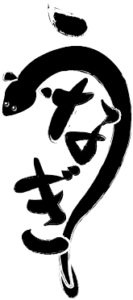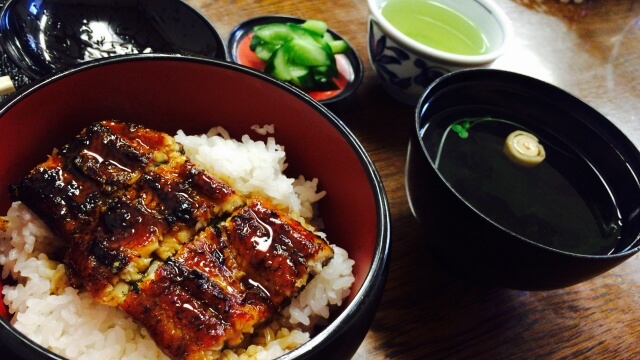Today is the second doyo-no-ushi-no-hi of 2020, so if you need a bit more explanation than what I gave in my post of last week, here you go.
 Let’s start at the beginning: What is doyo?
Let’s start at the beginning: What is doyo?
Traditionally, doyo is the period of 18 to 19 days before the beginning of a new season, so there are four doyo in each year: before the beginning of spring (called risshun) around Feb. 4, beginning of summer (rikka) around May 5, autumn (risshuu) around August 7 and winter (rittou) around November 7. Nowadays, doyo most often refers to the one in summer.
Generally, the doyo is considered a time of preparation for the coming season. However, it also means that times are a bit unstable, and it is possible, in particular during the last night, that demons may enter the world in the gap between two seasons. This is the reason for the setsubun ritual, where demons are ousted from our world on February 3rd.
Moving on: What is ushi-no-hi?
Ushi-no-hi is the day of the ox, one of the 12 signs of the Chinese zodiac. Every day (and every 2-hour period and every cardinal direction) is assigned one of the zodiac animals. Therefore, doyo-no-ushi-no-hi refers to the day of the ox during a doyo period. Obviously, when dividing a period of 18/19 days by 12 zodiac animals, some of the animals have to repeat. This is why in 2020, there are two days of the ox in the summer doyo period, on July 21 and August 2.
But what makes doyo-no-ushi-no-hi so special?
Well, the day of the ox during the doyo is considered the hottest day in all summer. In general, it seems to me that the Japanese bear the summer heat less well than the cold in the winter, which is understandable for anyone who has ever tried to move on a humid summer afternoon in Kyoto… Therefore, they have come up with a lot of little traditions to better get through the hot days.
 One of these traditions is moxibustion, where people burn dried mugwort on their skin. Another one is to wear “cool” colors like white, light blue or green and to take a hot bath in the evening. And another one is to eat healthy foods, which in this case means anything that starts with the letter u. Such foods are udon noodles, umeboshi (pickled plums), uri (all sorts of gourds including cucumbers, pumpkins, and melons) and unagi eel. While umeboshi, melons and cucumbers can be eaten cold, unagi needs to be cooked, which sounds a bit counterintuitive to a light summer meal. So, why unagi?
One of these traditions is moxibustion, where people burn dried mugwort on their skin. Another one is to wear “cool” colors like white, light blue or green and to take a hot bath in the evening. And another one is to eat healthy foods, which in this case means anything that starts with the letter u. Such foods are udon noodles, umeboshi (pickled plums), uri (all sorts of gourds including cucumbers, pumpkins, and melons) and unagi eel. While umeboshi, melons and cucumbers can be eaten cold, unagi needs to be cooked, which sounds a bit counterintuitive to a light summer meal. So, why unagi?
The story goes that a certain Hiraga Gennai, 18th century pharmacologist, renaissance man and gay icon, particularly recommended eating unagi on doyo-no-ushi-no-hi. However, not because he believed so fervently in the efficacy of the dish, but rather because one of his friends, who had an unagi restaurant, could do with more customers…
And that’s why many Japanese to this day still eat unagi on the hottest day in summer.
